[PConline Hengping] One of the key advantages of the iPhone 5 is that the LCD panel is enhanced. This IPS panel brings full SRGB coverage, wider viewing angles, and even foreign media shows that the iPhone 5 is comparable to professional-grade displays. This time we used the professional instruments used in the evaluation of television and the commonly used methods to conduct more detailed tests on the image quality of iPhone5, 4s, 4, iPad3 and other portable devices. At the same time, it also joined the Sony high-end LCD TV HX750 for comparison. In this way, how much difference in image quality between the screen of a mobile device and a large television is obtained. Let this article answer which screen in the IPS, AMOLED, VA, and TN camps is the best.
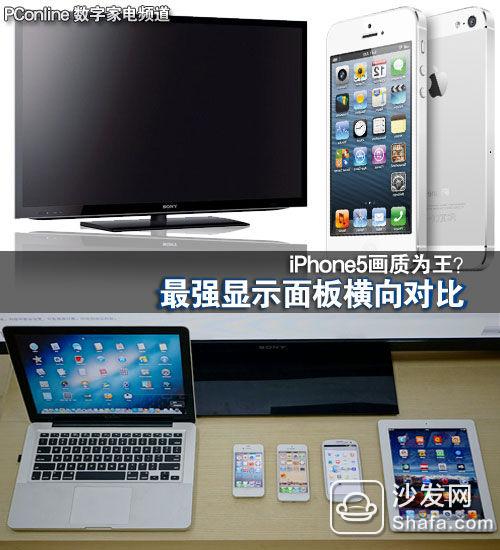
iPhone5 screen invincible? Mobile TV professional display contrast
Test model introduction
The tested models included the Apple iPhone 5, iPhone 4, iPad 3, Samsung i9300, and 13-inch Mackbook Pro (non-Retina). The TV chose Sony's 55-inch HX750 for comparison. The television that participated in the test was the Sony HX750. On the front panel, it used the Samsung S-PVA panel with PSA technology. It had a high quality in terms of picture quality. Sony also had a high level of image processing. A more suitable reference product.

Small-screen devices on the iPhone 4, 5 and iPad 3 have adopted high-precision LCD panel IPS material, these three have adopted a higher specification (LTPS low-temperature polysilicon TFT driver and a wide range of viewing angle technology). Another prominent advantage of the iPhone 5 and iPad 3 screens is the ability to display the SRGB full color gamut. SRGB, of course, is equivalent to 72% of the NTSC color gamut. From the point of view of data, it should be the same as most LCD TVs. However, compared to Apple's own products, there is still a slight improvement.

The Samsung i9300 continues to use its own AMOLED material screen, which has predictable advantages in terms of contrast, color gamut, etc. due to the advantages of self-illumination. The 13-inch Macbook PRO is a long-sleeved character. One of the most important reasons for it to participate in the test is because the author happens to own such a computer. The other reason is to see how far the TN screen compares to these higher-tech panels. .
Model sub-pixel list
With the help of the macro lens, we can clearly see the sub-pixel arrangement of each device. The iPhone 4 and 5 all use the conventional RGB arrangement, and there is no obvious difference between the two. The iPad3 is slightly squid-shaped, which is a clear IPS material screen. According to the data, it uses the PLS LCD screen produced by Samsung (also belongs to the IPS camp).

The 13-inch Macbook Pro uses a TN material screen, which is currently the most common type of panel in mid-range and low-end displays and notebook computers. The sub-pixels are clean and simple, and they are quite different from the IPS and VA camp pixels.
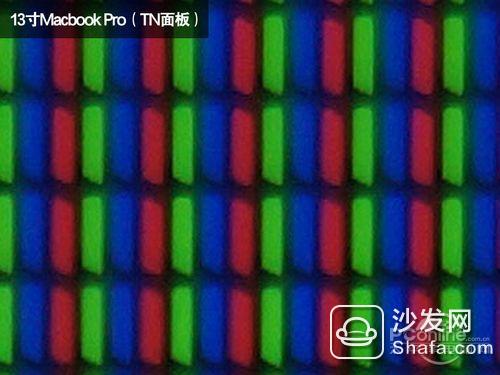
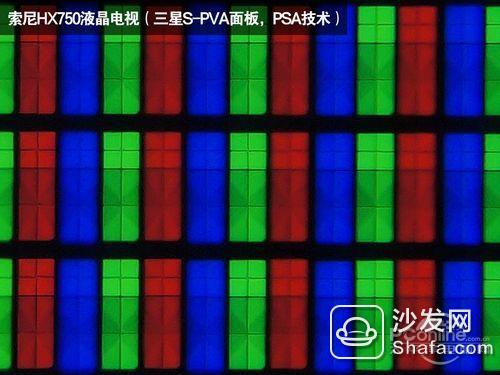
Finally, the LCD panel of the Sony HX750, as mentioned in the previous article, is a S-PVA screen manufactured by Samsung Display and uses PSA technology, which belongs to the LCD panel in the middle of the display.
Friends who are interested in the LCD panel can click on the article to learn more about:

User Comments Reply:

Xiao Bian: There are many arguments for the iPad 3's panel sources, including the early use of LGD's IPS LCD and the Samsung PLS LCD panels mentioned in some recent news. The PLS display mode, like IPS and FFS, is a method in which liquid crystal molecules in a cell are driven by applying an electric field in a horizontal direction, thereby exhibiting gray scales, and it is not inappropriate to judge that they belong to the IPS camp. In addition, some common small-size IPS LCD panels (iPhone4, 5, etc.) actually use FFS technology, but it is also called IPS.

Xiao Bian: IPS is indeed a kind of display mode, TFT is the driving mode, both are coexistence and no one is greater than who. In some arguments, manufacturers may selectively change titles in order to highlight some technical features, such as Sharp's IGZO panel, which drives LCD panels using IGZO-TFT. These are nothing more than titles, but if the IPS panel is called a TFT liquid crystal panel or a TFT-driven liquid crystal panel in an IPS display mode, it is tedious or unrepresentative.
Quality parameters measured and compared
In the evaluation image quality, we used Konica Minolta color brightness meter - CS200, this device can measure the screen's color gamut, screen brightness and contrast parameters. From these aspects we can have a clearer understanding of the display capabilities of different devices. The i9300's color display is adjusted to "dynamic" to maximize the panel's level.
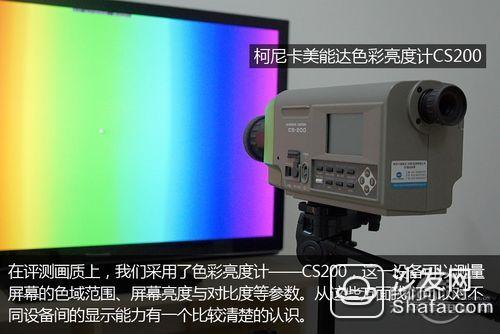
Central brightness
In the central brightness, since these LCD screens have adopted LED backlight, the brightness is relatively high, in which the iPhone 5 reaches 521nits, which is quite an exaggerated value, and other devices such as iPad3, iPhone4s, etc. have a good performance. The Samsung i9300 uses an AMOLED panel, so it is different from other devices in the maximum brightness, but the brightness is only a measure of the standard, does not mean the level of picture quality, will affect the contrast.
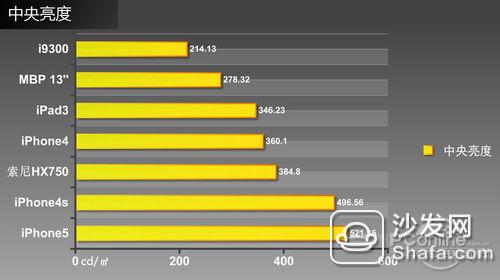
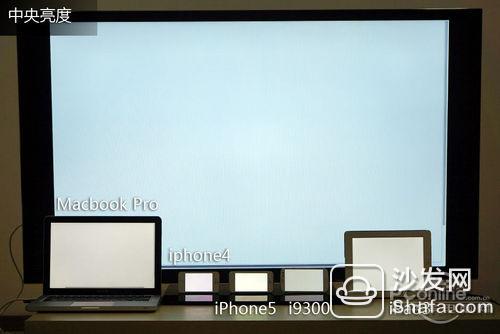
Black screen brightness (lower number is better)
The brightness of the black screen indicates the ability of the screen to display a full black screen. In this test, the self-illuminating OLED occupies a considerable advantage. The i9300 has far away from the opponent with 0.02nits; in addition to the Sony HX50 TV Also has a very good 0.04nits, but it also benefits from its adjustable dynamic backlight; other devices are roughly the same around 0.4nits, compared to 4,4s, iPhone5 at this level there is no improvement.
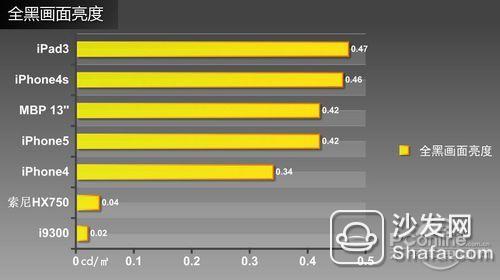

Let's take a look at the light leakage of the black screen. Since the i9300 self-illuminated AMOLED, it emits almost no light under the black screen and is completely invisible in the figure. The iPhone 5 is more even than the 4 and the iPad 3 uses two rows of LED backlights. , There has been a more serious light leakage phenomenon.
Contrast (bigger is better)
This value comes from the ratio of the brightness of the center to the brightness of the black screen, which means that the brightness is large enough or dark enough to affect this data. Therefore, Samsung i9300 won the top spot with its ultra-low black screen brightness. The value of 10706.5:1 is quite amazing, and LCD is almost unable to reach this level. The HX750 TV also achieved a high contrast, which of course benefits from the TV's advantage in dynamic backlighting; the iPhone 5's data in this area is generally higher than just 4 and 4s.
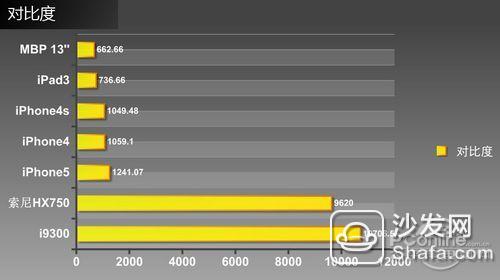
NTSC color gamut
NTSC color gamut has a wider color range than SRGB, which is equivalent to 72% of the former. Therefore, the full color gamut of SRGB advertised by iPhone5 and iPad3 is only 75.33% and 73.98% before NTSC. Compared with older models such as 4,4s, the color has improved significantly; i9300 once again achieved 100.97% NTSC color gamut with AMOLED. It is worth mentioning that the Macbook's TN screen also achieves a high color gamut, and it seems that it is not sufficient to distinguish the advantages and disadvantages of the screen by color gamut.

Comments: From the literal point of view, in addition to the maximum brightness, i9300 has a great advantage, especially in contrast and color saturation; and iPhone5 in the liquid crystal material equipment has been considered quite outstanding, especially the contrast 4, 4s screen, even in some aspects is no less than the performance of LCD TVs. As a high-end LCD TV, Sony HX750 also has a higher test value, of course, portable devices have to catch up with. However, data is only one aspect of measuring the quality of the screen. What is more important is the display of some real-life scenarios. Good data does not mean that there is a natural display effect. This is in line with the hardware running. A high running score does not 100% guaranteed smooth operation, especially for the i9300.
Quality Test Chart Analysis
After reading the boring data, we have a general idea of ​​the picture quality of these devices. However, the image quality that we are talking about can be given without these boring data. Still need to use the test picture quality to further measure grayscale, color, black and other aspects of performance, in some cases, although the screen data is excellent, but the actual picture perception is not satisfactory.
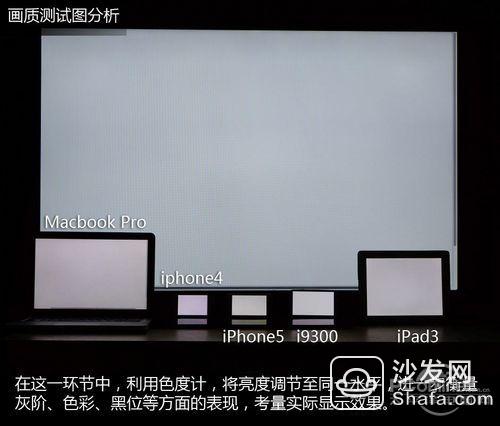
It should be noted that the display of the screen map depends on the quality of your screen. If the display quality is not good enough, you may not be able to see all the screen conditions in the image below. At this time, you can only view the text description of Xiao Bian. In this test, since the maximum brightness of several devices is not the same, Xiao Bian adjusted each to a nearly uniform brightness level (210 nits) with a colorimeter, ensuring the fairness of the comparison.
Grayscale test
In this link, a smooth grayscale image without color is used for testing. The standard measure is to smooth the transition and minimize the appearance of unnatural transition patterns.

In this comparison, the iPhone 4 and iPhone 5 have relatively smooth transitions; however, the Samsung i9300 has several obvious color patches in the middle of the larger light-dark transition area, which is obviously worse on the gray-scale transition. Mackbook Pro is also a bad example. Stripe patterns appear in the shadows, and the transition is quite unclear.

iPhone5


iPhone4 (left) i9300 (right)

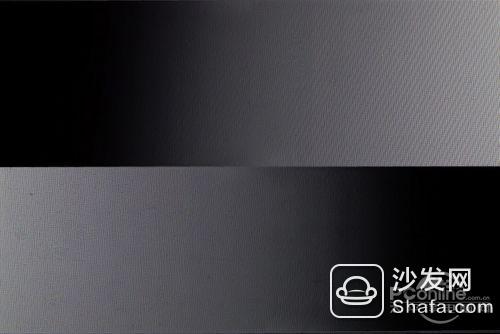
iPad3 (left) Macbook Pro (right)
Black level test
In this test is designed to detect the screen on the dark details of the performance, the ideal situation is that the screen can display all 20 dark blocks in the picture, and can show the difference of each block. Due to the limitations of shooting equipment, Xiao Bian has adjusted the light and dark curve so that everyone can see the obvious color difference, but it will not affect the authenticity of the display. It is difficult to observe the eye even after adjustment. Insight.
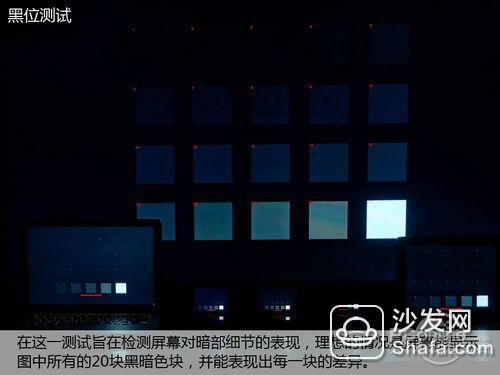
The iPhone 5 performs best on all devices. All color patches are clearly visible and have a reasonable level of order. Although the i9300 performs well in contrast, self-illuminating AMOLEDs are also very advantageous, but it is precisely because most of the squares are too dark. However, if in reality the details of the shadows may appear to be stuck together, because those transitional patches that are too dark are almost indistinguishable to the naked eye.
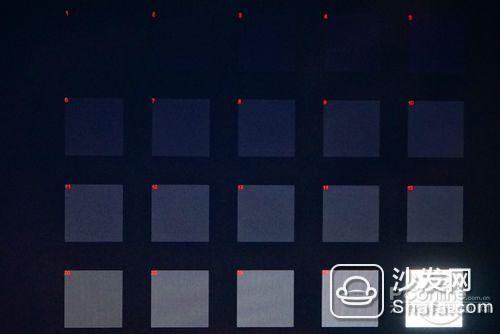
iPhone5 black bit test


iPhone4 (left) iPad3 (right)
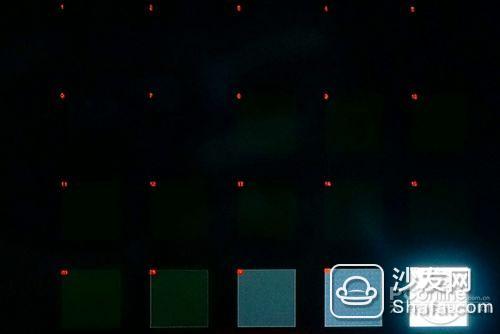
I9300 black bit test chart


Macbook Pro (left) HX750 (right)
iPad3, iPhone4 are in the middle of the flow, most of the squares can be displayed, the top row of squares can not be displayed; Macbook Pro 13-inch as a cannon fodder, in addition to the bottom row, the rest of the box are not displayed, In fact, although such a screen brings high contrast and the illusion of black is dark enough, it is quite insufficient in terms of picture quality. The Sony HX750 can be used as a high-end TV and can display all the color blocks, but the darkest. The distinction between several color blocks is not too obvious.
RGB three-color real shot
There are also RGB red, green and blue color contrast with the original image, through comparison can easily see the characteristics of the device in color reproduction. The images seen by Xiao Bian at the scene are even more obvious than the screen shots. The iPhone 4 is quite dim on the 3-color display, while the iPhone 5 and the iPad 3 show the same color orientation. The iPhone 5 will be brighter; the i9300 will be displayed in green. On the brighter than other devices, it also shows that AMOLED is more extensive in the green reduction, as real and otherwise bad evaluation.

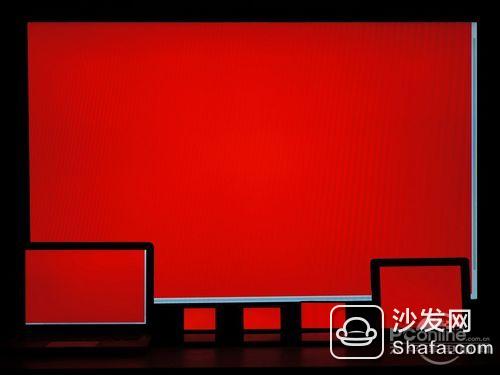




Comments: You can see that although the i9300 dominates the image quality data, the performance of the image quality test chart is far from satisfactory. Compared with the iPhone 5, the grayscale transition is relatively blunt; the contrast is excellent, but it is effective in the black level test. To distinguish each block, most of the darkness will cause the dark parts of the object to be so dark that we can hardly distinguish with the naked eye.
Comparison of viewing angles
First of all, put on a contrast map of the head-up, so that everyone has an understanding of the color of these screens. You can see the degree of vividness to i9300 even worse, HX750 TV followed, iPhone5 again, and then is the iPad3, iPhone4 color contrast down look dim.

Squint from the top of the screen, iOS three devices are no obvious color changes, i9300 appeared a slight blue. The TN screen of the Macbook has a whitish problem, but for the TN screen it cannot be forced. The HX750 performs well.
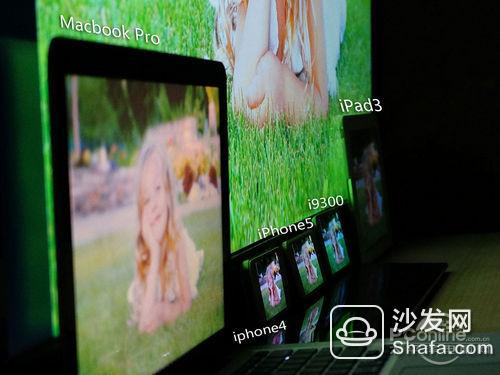
Observing the angle of the screen at an angle of 45 degrees is a big challenge. Even the iPhone 4 equipped with an IPS screen has a whitening problem, while the iPhone 5 is performing well and the color change is not serious. The i9300 still appears blue. The problem.
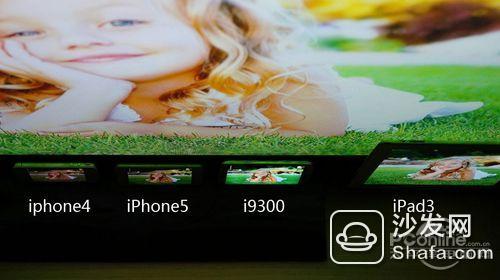
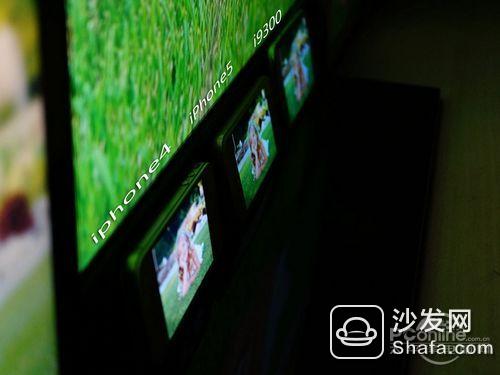
Compared with the right side view of the screen, the i9300 was found to be bright, but the colors did not appear distorted, and the other screens did not change.
Screen shot comparison
The last level is the screen shot of the screen display photos, which is much subjective compared to the previous ones. You can refer to the look, the general colors are ranked in i9300> HX750> iPhone5> iPad3> Macbook Pro 13' > iPhone4.



Original image
Here to talk about subjective views, first of all the iPhone4's color seems to be behind the times, the color is very gloomy. iPhone5, iPad3 has a very consistent color performance, iPhon5 color to be more vivid, in the green performance can easily see the difference, but both of the color reproduction I think are more true. I9300 has a more vivid color performance, especially for the reduction of green, visible AMOLED's color gamut is much wider.


Comparing all device screens (left) Original (right)



Comparing all device screens (left) Original (right)
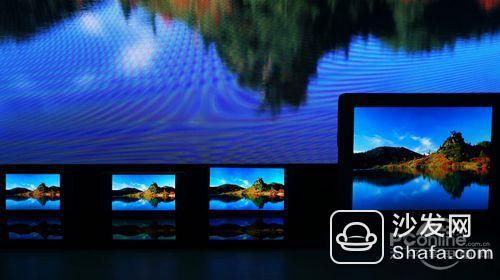


Comparing all device screens (left) Original (right)



Comparing all device screens (left) Original (right)
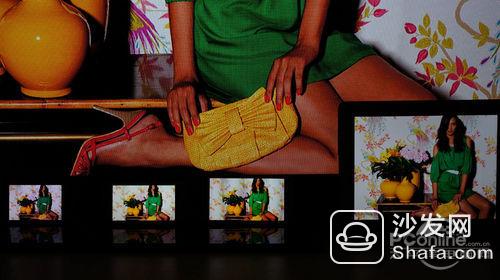
The color of the HX750 TV is warmer than the iPhone 5 and iPad 3, but in many people's eyes, the Sony TV's color reproduction is also quite accurate. Like the iPhone 5 or Sony's color, it is a matter of opinion. Here both show the performance of high-end LCD screens.
Editor's summary: In the comparison, iPhone 5 on the screen to enhance the obvious, compared to 4 not only covers a wider color gamut, grayscale, black level and other color performance is even better, even better than the iPad3's screen. Although the test data is not the best, but it has the most balanced performance, even if there is no obvious disadvantage compared to Sony's TV, the only downside may be that all portable LCD screens are common, and black performance is still not good enough. , compared to AMOLED or high-end LCD TVs are much worse. The i9300 demonstrated AMOLED's technological advancement. The hard data are all excellent, with amazing color gamut and contrast. However, the gray-tone transition is somewhat blunt, and the phenomenon of black level performance in general also shows the lack of quality adjustment.
Our Musical Mug is good in quality and competitive in price. We are manufacturer and supplier of Musical Mug following your specific requirement. We are looking forward to your E-mail and establishing cooperative relationship with you! We would provide professional Musical Mug with good services for you!
Recordable Musical Mug, Recordable Music Mugs for Promotion, Promotional Music Mug
AST Industry Co.,LTD , https://www.astsoundchip.com
